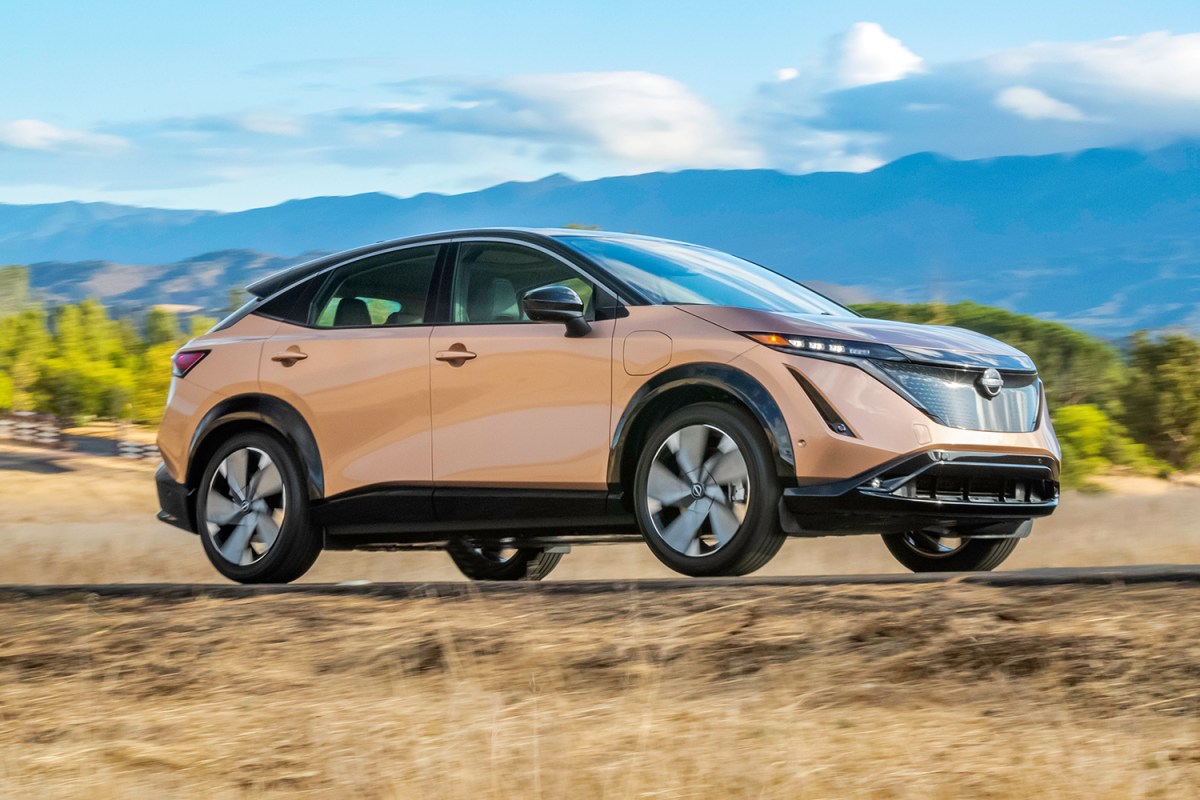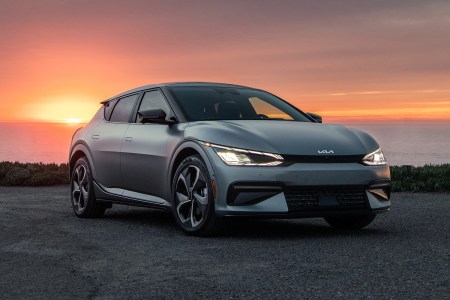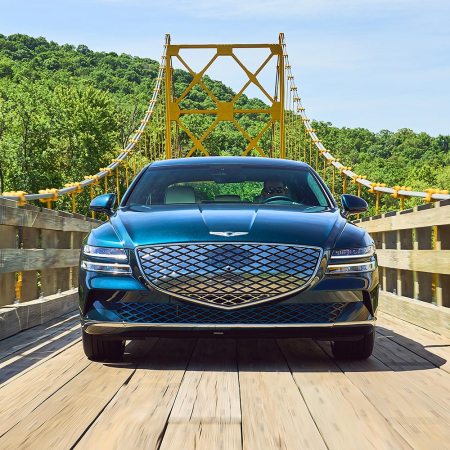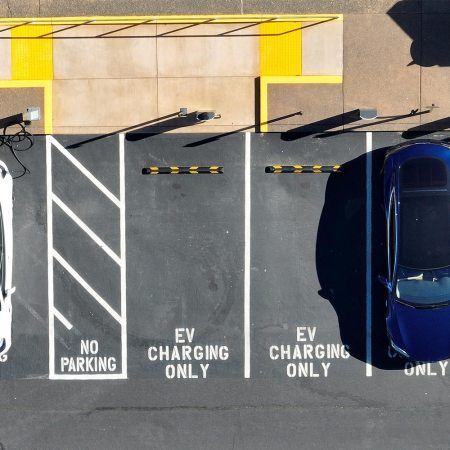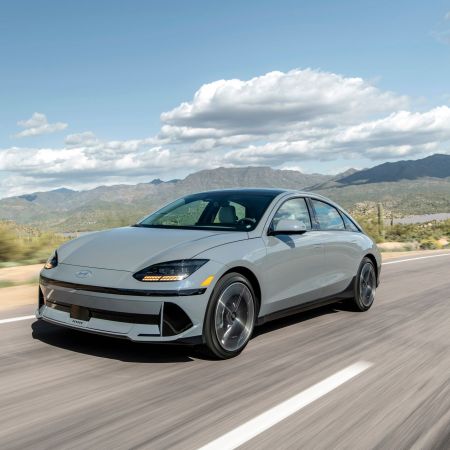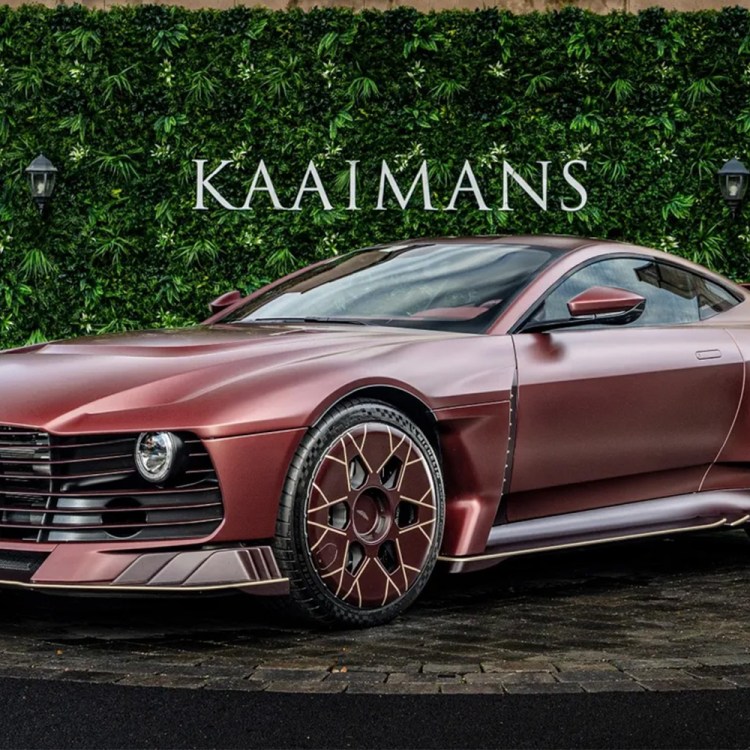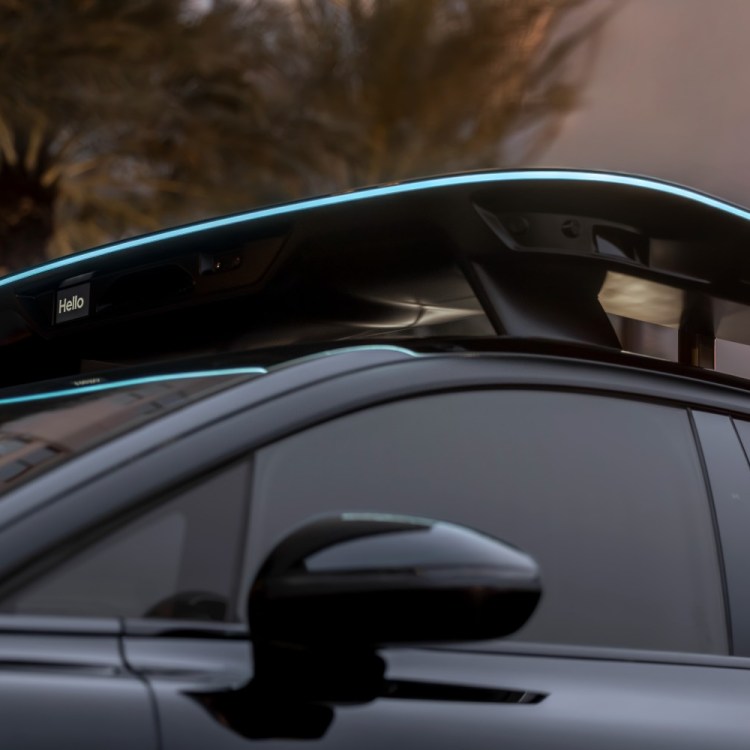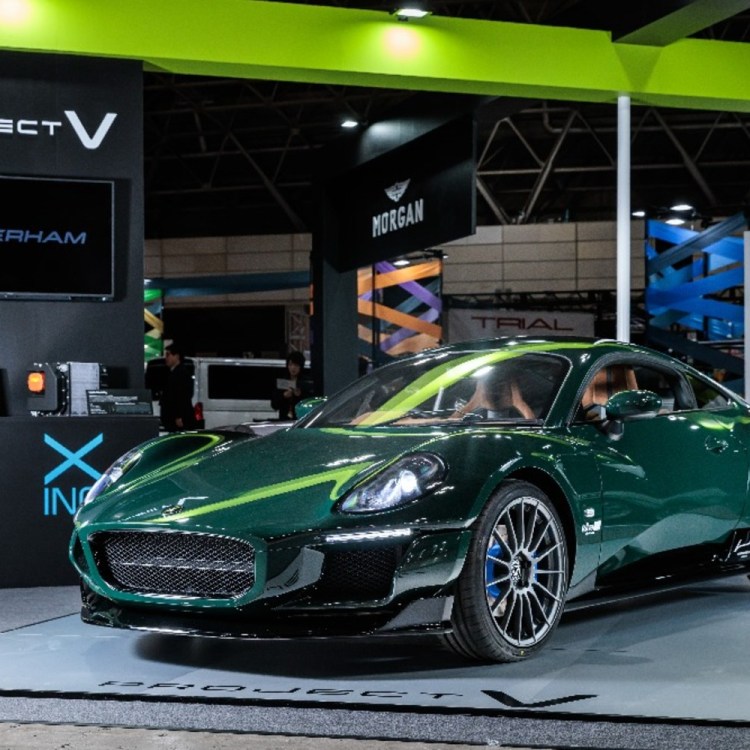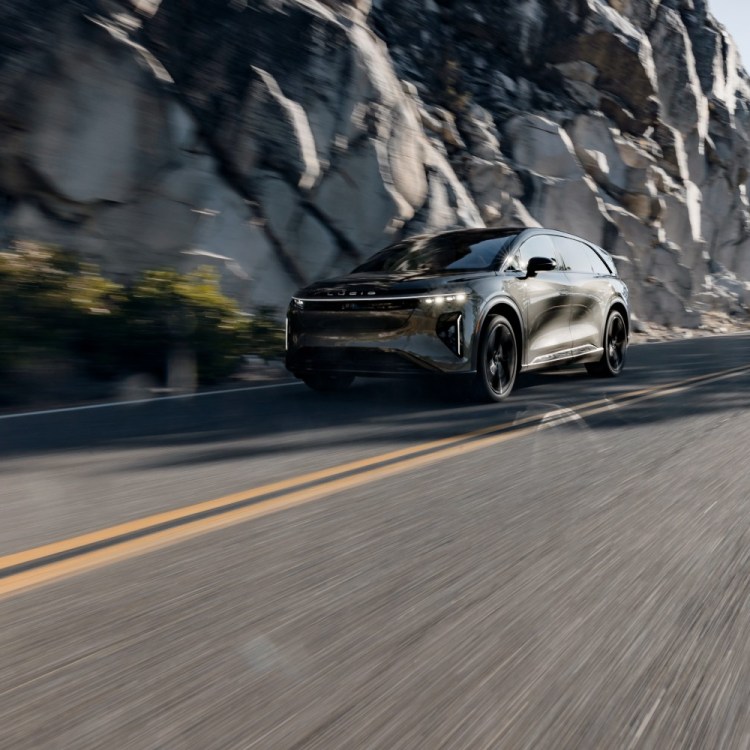For a company that pioneered commercially-available electric cars in the 2000s, Nissan has found itself conspicuous in its absence from the modern EV landscape over the course of the past five years. Although the groundbreaking Leaf is still in the lineup, it would be a stretch to call its latest iteration competitive with the crop of latest-generation electrics that push well past it in terms of range and charging speed.
It’s taken more than a decade for the Leaf to gain an electric showroom sibling, but in many ways the wait has been worthwhile. Rather than build on the dated tech underpinning the compact hatchback, the Nissan Ariya expands in terms of both size and capability by introducing an entirely new electrified architecture wrapped in a practical SUV shell.
The introduction of the Ariya is a necessary move for an automaker that has largely sat on the sidelines and watched its early EV lead evaporate in the face of so many competent competitors. To pull even, the electric SUV is going to have to sprint right from the stocks and prove that it belongs alongside rivals who’ve leap-frogged Nissan’s accomplishments and carved out a hefty chunk of market share in the process.
| Vehicle | 2023 Nissan Ariya |
| Trim Tested | Platinum+ e-4ORCE AWD |
| Starting Price | $43,190 |
| Price of Model Tested | $62,260 |
| Vehicle Type | Five-passenger, four-door electric SUV |
| Motor | Dual-motor EV, 389 horsepower, 442 lb-ft of torque |
| Range | 267 miles |
| Availability | As of fall 2022 |
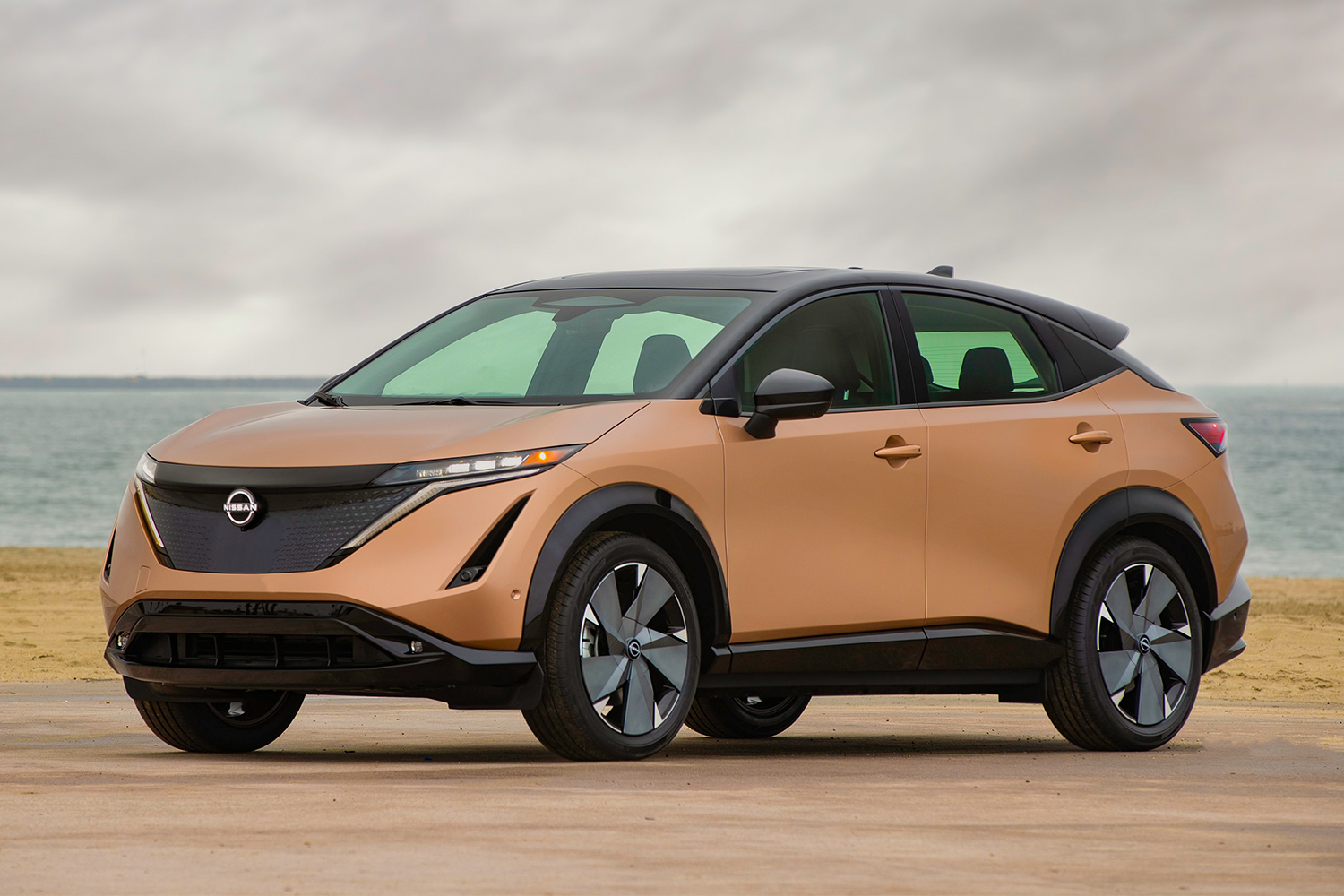
Easy on the Eyes
At the very least, the Ariya’s designers have made sure it has a style advantage. Cognizant of the fact that the all-new interloper needed to grab eyeballs to have any hope of making up ground, Nissan has adapted its current visual cues to a sleek, arresting shape. The model I had was finished in a kind of rose-gold paint that did an excellent job showing off its various exterior details, and while there are shades that are less flattering to the Ariya, I was quite taken by the two-tone presentation.
Squint and you’ll see vestiges of Nissan’s other crossovers like the Rogue and the Murano in the mix, but overall it’s a successful combination of concepts that keep the Ariya from falling into the generic SUV soup that has claimed many a victim. The vehicle avoids the extroversion of Hyundai and Kia’s similarly-sized efforts, but that will no doubt broaden its appeal for numerous buyers wary of standing out in the parking lot at work.
Review: Kia Goes After a New Crowd With the Upscale EV6
A little less curb appeal means more range for the new electric SUVThe Ariya’s cabin does an excellent job balancing a more traditional luxury look and feel with the gee-whiz aesthetic often employed inside EVs to constantly remind you that you’re driving the future. I was pleased to see restraint in terms of the level of piano black (read: fingerprint collector) trim on hand, instead replaced by soft-touch leather on the dash, door panels and center console. These details provided an organic touch to what all too often can feel like a sterile, lab-grown environment in modern electric cars.
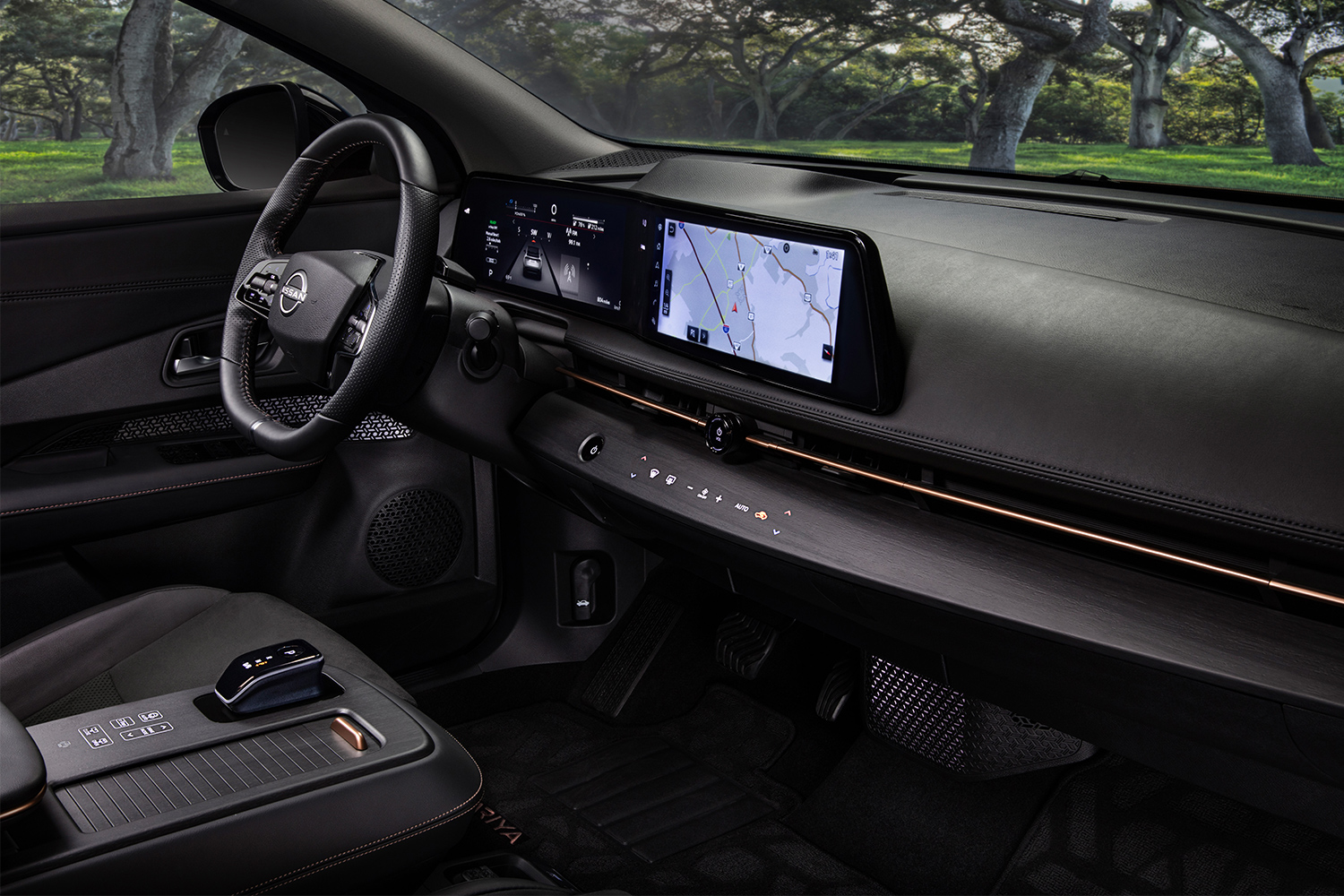
Mapping Out Power and Range
There are multiple configurations offered by the Nissan Ariya, and choosing the right one for your particular needs will depend on your particular driving habits, weather conditions and willingness to stomach a sizable window sticker.
The base Engage trim is front-wheel drive only, an odd choice in a world where electrification means no longer being saddled with the ICE packaging demands that shifted the market away from rear-wheel drive’s more pleasing dynamics. This model also restricts you to the SUV’s smallest battery pack and a modest range of 216 miles. Parsing through the Ariya’s nine different editions, you can further push down the range by selecting a dual-motor, all-wheel drive version of the Engage trim (205 miles), or stick with front-wheel drive and swap in a larger battery in the Venture trim for the maximum 304 mile push.
The version I drove — the Platinum+ 4ORCE AWD — split the difference by incorporating the largest battery, all-wheel drive and respectable power, leveling off at 267 miles of range. This mostly matched my driving experience in warm weather, with a slight penalty when the mercury dropped to near freezing.
With 389 horsepower on tap, the Platinum+ makes the most of its 87 kWh battery, scooting to 60 mph in a comfortable, if not overwhelming five seconds flat. More importantly, I discovered that the Ariya was easily able to overtake slowpokes on the two-lane roads leading from the highway to my home, making the most of limited passing zones without upsetting the calm demeanor that defines the Nissan’s character.
That composure extends to the SUV’s Sport drive mode, too. I had a hard time differentiating the power delivery differences compared to normal operation, and I was unable to detect any meaningful improvement in traction from the vehicle’s active all-wheel-drive system. What I did discover was a frenetic burst of electronic noise from the speaker system whose swelling I assume was meant to add spice to the experience, but merely ensured that I avoided selecting Sport mode as much as possible.
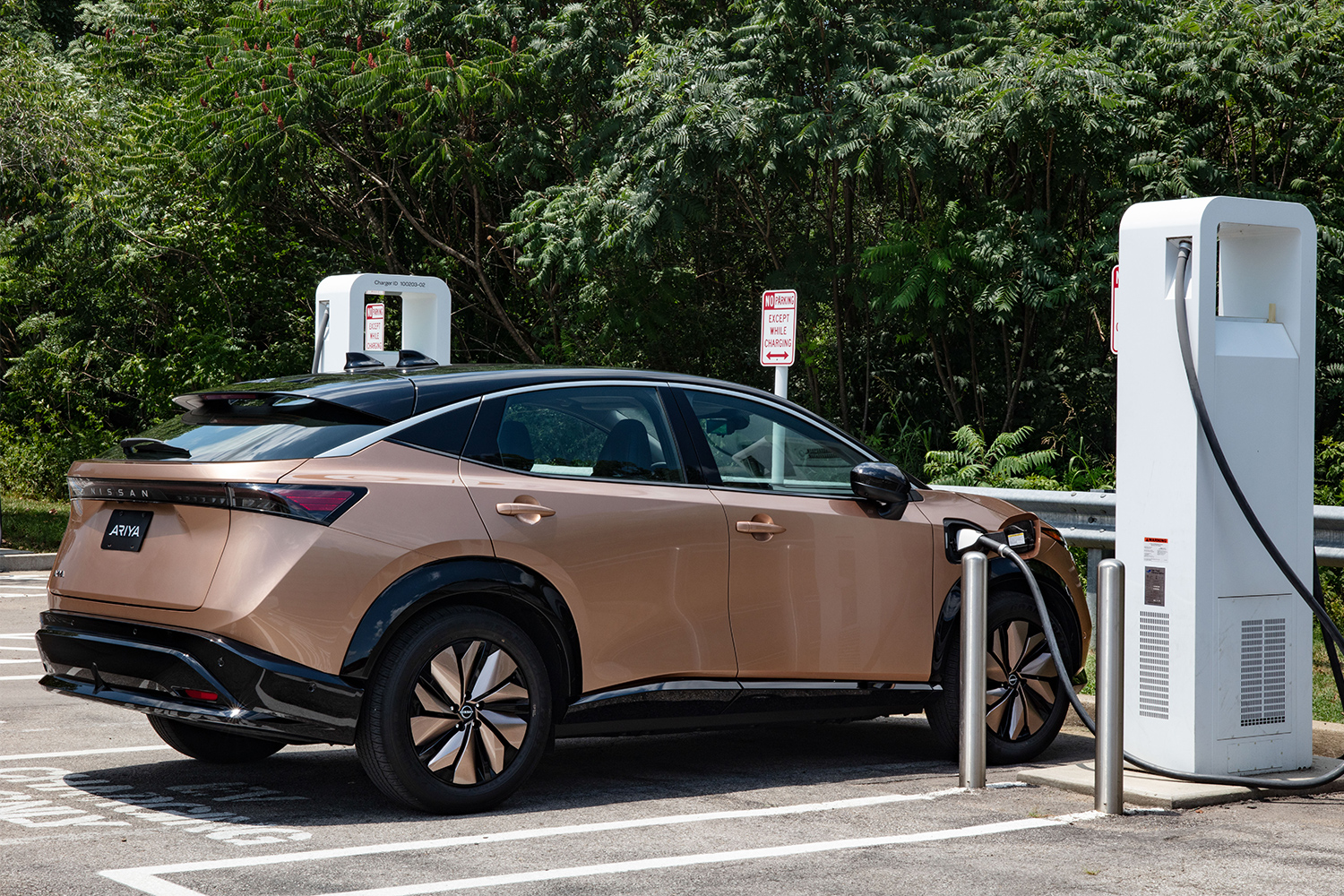
Overshooting the Mark(et)
The premium presentation inside the Ariya I drove had to do with it being the top trim level, and while I appreciate Nissan’s desire to reach another level of luxury, its pricing was enough to give me pause.
The base SUV starts around $45,000, and the Platinum+ e-F0RCE AWD is listed at $60,000. That’s thousands more than an entry-level Hyundai Ioniq 5 or Volkswagen ID.4, each of which out-stretch the Ariya from one charging station to the next. In fact, if you skip up to the version of the Ioniq 5 whose price tag matches that of the Ariya, you’re looking at nearly 100 miles more driving range per charge. The gap widens at the top end of the lineup, where the Nissan checks in between $5,000 to $10,000 more than its peers.
This is an odd tack for Nissan to take, given that it’s swimming upstream to lure customers in a world where current offerings have already absorbed the majority of early adopters. In fact, pricey EVs of nearly every stripe are seeing a sales slowdown for exactly this reason. Throw in the fact that the Leaf has already soaked up any tax credits that the Ariya might have taken advantage of, and the extra cost weighs in even heavier.
As nice as the Ariya is to drive, and as pleasant as it is to look at from the driver’s seat, the real unexploited electric niche is in the same affordable commuter segment that Nissan originally piloted with the Leaf. If there’s growth to be had, it’ll be found at a more modest price point than what this SUV has to offer.
This article appeared in an InsideHook newsletter. Sign up for free to get more on travel, wellness, style, drinking, and culture.
